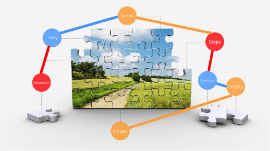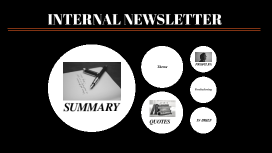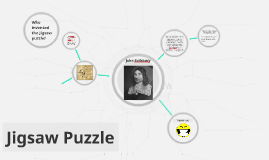Jigsaw Puzzle
Transcript: --------- ------------ This Presentation will show you how Jigsaw Puzzles are made, their history , steps, and materials --------------- ------- --------------- -------- --------- --------------- --------- Introduction Shop Project Sydney How it's made;Jigsaw Puzzles History History In 1767, a British cartographer named John Spilsbury was credited for making the first puzzle. However in the early 1760's Cartographers made their maps on pieces of wood and cut them into multiple small pieces. When Jigsaw puzzles were first invented, they were handmade on thin sheets of Birch Wood then cut out by hand. This made the puzzles very expensive. Throughout time ,however, they were cut out using Jigsaws , hence , giving them the name. Although they were not mass produced at first, they became mass produced in the times of the great depression as a form of entertainment. Some people still will handmake them for customizing. Materials Materials To start off, the raw materials listed are the materials used to make the puzzle. Paper Pulp is used to make the Paperboard & Paper. Paper pulp is what is used to make all sorts of paper products. Paper pulp is the fibers of wood. It is then compressed to make a single piece of paper. Carbon Black is used to make the ink. It is made out of a type of carbon that can be made into petrolleum.It is also used in tires. Animals Bones and tissue are used to make the glue that is used to put the paperboard and picture together. Machines used are die cutters and presses Steps Steps First, the picture in selected and printed. The most common process used to print the pictures for puzzles is called lithography. Lithography uses a plate, which is made to absorb oils and water. The spots on the plate that will not have anything printed on it is wetted with water while spots where things will be printed are coated with grease, to attract the oil-based ink. When ink is applied to the plate, it sticks only to the grease coated area. As the plate is brought into contact with paper, the image is transferred. Many puzzle pictures may be prepared on the same lithography sheet to save paper and minimize press time. After printing, the sheets are laminated onto paperboard. They dried for several days before they are sent to the die cut press. Puzzle pieces today are mass-produced in a process known as die cutting. A die cutting press uses a sharp, flat metal ribbon to stamp out the individual pieces. The drawings of the cuts are sent to experts who bend sharp steel pieces into the shape of the puzzle pieces. For a 500-piece and uncomplex puzzle,it could take up to 17 days. Three or four dies could be made for puzzles of the same size and shape. The metal pieces are then pounded into a wooden die. One side is fixed in a wooden block. When this block is pressed onto the soft paperboard backing, the backing surface is cut into the shape. After leaving the die press, the sheets go through a breaker, which separates the puzzle pieces and puts them into the boxes, typically a cardboard box. Today,the puzzle boxes will have a picture of the puzzle to use as a guide. This, began in the mid-1930s. These boxes then go through final packaging, such as shrink wrapping. Finally, they are shipped to retail stores. Conclusion Conclusion In summary, although the mass production of jigsaw puzzles doesn’t have very many steps, the process is very interesting. However, since they are mass produced it is easier than custom making one at a time because while one is drying you could glue together hundreds of others. I hope this presentation helped you learn how jigsaw puzzles are made, materials, steps, and history. Credits Credits https://en.wikipedia.org/wiki/Jigsaw_puzzle ----Wikipedia http://www.madehow.com/Volume-4/Jigsaw-Puzzle.html ---- How it's made, Jigsaw Puzzle https://www.google.com/ ----Google Pictures Puzzle pieces are mass produced in a process known as die cutting. A die cutting press uses a sharp, flat metal ribbon to stamp out the individual pieces. The artists drawings of the cuts are sent to rule-bend experts who bend razor sharp steel rules into the shape of the puzzle pieces. The metal rules are then pounded into a wood mounted die. One side of this metal ribbon is fixed in a wooden block. When this block is pressed with sufficient force onto the softer cardboard backing, the backing surface is cut into the desired shape. Puzzle pieces are mass produced in a process known as die cutting. A die cutting press uses a sharp, flat metal ribbon to stamp out the individual pieces. The artists drawings of the cuts are sent to rule-bend experts who bend razor sharp steel rules into the shape of the puzzle pieces. The metal rules are then pounded into a wood mounted die. One side of this metal ribbon is fixed in a wooden block. When this block is pressed with sufficient force onto the softer cardboard backing, the backing surface is cut into the desired shape. Puzzle pieces are mass produced in a process known

















